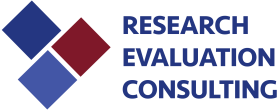Nonprofit organizations rely on logic models and theories of change (ToC) to effectively design, implement, and evaluate their programs. However, while these tools are invaluable, creating and using them well requires careful planning and attention to detail. This blog outlines best practices for logic models that help nonprofit leaders plan, communicate, and adapt their programs effectively. It also offers strategies to maximize the potential of these frameworks and navigate common challenges.
What Are Logic Models and Theories of Change?
A logic model is a visual representation of how a program’s resources, activities, and outcomes connect to achieve its goals. A theory of change, on the other hand, explains the rationale behind those connections, outlining assumptions and the pathways to success. Together, these tools serve as roadmaps for achieving measurable impact.
Clarity and Simplicity in Logic Models
When developing a logic model or theory of change, it’s tempting to include every detail of your program. However, clarity and simplicity are essential. In other words, the goal is to create a framework that stakeholders can easily understand and use.
- Focus on the essentials: Highlight the most critical inputs, activities, and outcomes without overloading the model with unnecessary details.
- Use clear language: Avoid jargon and technical terms that might confuse stakeholders. A concise and approachable narrative ensures accessibility.
- Visualize effectively: Use diagrams or charts to present your logic model or ToC. Keep these visuals clean and organized to enhance comprehension.
Base Your Framework on Evidence
Effective logic models and theories of change rely on sound evidence to support their assumptions. Incorporating the best practices for logic models, ensures that your program design is grounded in reality and increases the likelihood of success.
- Conduct research: Review academic studies, reports, and case studies to validate your assumptions and strategies.
- Leverage data: Use internal program data or insights from similar initiatives to inform your framework.
- Test assumptions: Identify potential risks or gaps in your logic and address them proactively.
Be Flexible and Iterative
Both logic models and theories of change should be seen as living documents. As your program evolves, your frameworks should, too.
- Revisit regularly: Schedule periodic reviews to ensure that your model remains relevant and accurate.
- Adapt to change: Update your framework to reflect new challenges, opportunities, or insights from evaluation findings.
- Test and refine: Use pilot programs or phased rollouts to validate your model and make improvements.
Plan for Challenges
Still, even with careful planning, nonprofits may encounter obstacles when creating and using logic models and ToCs. Here are some common challenges and strategies to address them:
- Overcomplicating the model: Simplify by focusing on high-level components and leaving detailed plans for other documents.
- Assumptions going untested: Build in evaluation mechanisms to assess whether your assumptions hold true.
- Stakeholder disagreements: Use facilitated discussions to find common ground and prioritize shared goals.
- Lack of resources for implementation: Align your model with available resources and adjust expectations if necessary.
Examples of Best Practices for Logic Models
Imagine a nonprofit focused on workforce development for underserved populations. Here’s how best practices might shape their logic model and ToC:
- Clarity: The logic model highlights inputs like staff, funding, and partnerships; activities such as job training and mentoring; outputs like training sessions delivered; and outcomes including increased employment rates.
- Stakeholder engagement: The nonprofit holds workshops with employers, trainees, and funders to refine their ToC, ensuring alignment with market needs and participant goals.
- Evidence-based design: The ToC incorporates research showing that soft skills training improves job retention, reinforcing the program’s focus.
- Flexibility: As labor market trends change, the nonprofit updates its model to include new training topics, such as digital literacy.
Conclusion
Ultimately, logic models and theories of change are powerful tools that can drive nonprofit success, but they require thoughtful development and ongoing refinement. These best practices for logic models can strengthen program design and ensure alignment with real-world outcomes. By focusing on clarity, engaging stakeholders, grounding your work in evidence, and planning for challenges, you can create actionable frameworks that guide your programs toward meaningful impact. Reach out to REC, with these best practices in mind we can help your nonprofit turn its vision into measurable change.
Related Posts:
Logic Models and Theories of Change: What is the Difference and How Do They Help?
How to Become a Data-Driven Organization
Using Logic Models to Navigate and Pivot
Sources:
Family and Youth Services Bureau. (n.d.) Logic model tip sheet. Department of Health & Human Services
USA. https://www.acf.hhs.gov/sites/default/files/documents/prep-logic-model-ts_0.pdf
Yarmey, N. (2024). Improve your logic model using 3 simple design principles. Eval Academy.
https://www.evalacademy.com/articles/improve-your-logic-model-using-3-simple-design-principles
Shtivelband, A. (2021). Let data drive your decisions. Research Evaluation Consulting LLC. https://researchevaluationconsulting.com/using-data-to-make-decisions/
Sopact. (2025). Theory of change vs logic model: Which framework is right for your project?
https://www.sopact.com/guides/theory-of-change-vs-logic-model

